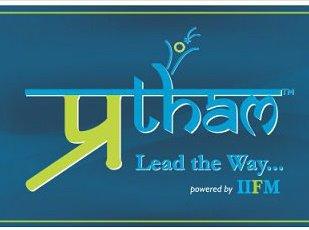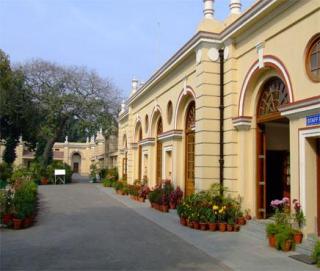
Journalism as a course was offered in five colleges of Delhi University presumably, Delhi College of Arts and Commerce, Kamala Nehru College, Lady Shri Ram College, Maharaja Agrasen and Kalindi College. A separate Honours programme in Mass Media and Mass Communication was available in Indraprastha College for Women, only. The new 4-year undergraduate programme has amalgamated these courses into a single entity: Bachelor in Journalism and Mass communication (BJMC), offered in all 6 colleges.
As per the FYUP guidelines, students of this subject will have to take up 30 subjects in their course of study. The course located within the Faculty of Applied Social Sciences and Humanities (FASSH), has been designed to provide theoretical and practical knowledge, with the help of four skills based papers, and provides the students with technical skills to help them in their careers.
Admission: Cut off list based on merit
How different is the course now?
From a shift to Journalism and Mass Communication from plain old Journalism, a change is somewhat expected. However, when given a look at the course, it still happens to be extremely dominated by Journalism. The papers in the first year have been minimized to two per semester as opposed to the four earlier. While many papers have been shuffled to different years, a lot have been completely removed, for e.g.: Indian State and Democratic Polity, Indian Economy and Business and International Politics, find no place in the current system. Also, a contemporary paper like – ‘IT and Online Journalism’ earlier taught in the first semester, has been dissolved into New Media (Semester 3) and Online Journalism (Semester 7) in the new FYUP.
Practical or Theory?
With the obvious decrease in theory papers, many papers from the earlier system find themselves extinct in the current programme or are amalgamated with various other subjects to create a new paper which represents them faintly. For e.g.: Global Politics and the media, in the 6th semester of FYUP, has extractions from various previous papers. There is an increase in skill based papers which give practical hand on knowledge, like Print Production (Semester 3), Writing and reporting for Print (Semester 4), Documentary Production (Semester 6) and others. The course is definitely no longer just theory based. There are practical subjects in four semesters while two others have research based projects similar to the previous model of a dissertation. Papers such as Media and Cultural Studies and History of Media have survived the brunt of the FYUP, keeping the media theory bits intact.
Discipline Courses – IIWhile Political Science and Economics papers have been scrapped in the new system, the concept of ‘minor’ or DC-II courses might enable students to experience subjects such as Political Science and Sociology. With the present uncertainty around the concept, depending upon the college you are studying in you might be given a choice for your minor field. Most probably, these options would include courses such as English, Sociology and Political Science. You would then be doing six papers in the subject that would be your minor. So in the end if you do get to have Political Science as a minor subject, you would actually be studying more of the subject than in the previous system.
Applied Courses
One of the positive attributes of the FYUP, are the Applied Courses. While in the earlier system, Documentary production was a voluntary activity with no merit awarded to it and photography skills had to be acquired outside of college, FYUP carves out dedicated papers to this skill based subjects. Print Production (Semester 3), teaches students the various design softwares needed in print media. Still Photography (Sem 4) emphasizes on the importance of still photography in media and gives foundation knowledge on composition and framing alongside technical know how. Documentary Production (Semester 6), will provide specialized knowledge for Radio and Video Documentary. The final product of this paper will be a 12-min documentary by the students.
(Journalism and Mass Communication 2013 cut-off)
Expected workload
The students can enjoy a load free first year but there is an incremental increase in difficulty and subjects with each year, as opposed to the firm, four papers every year, in the previous programme. The students will have to manage their time and workload in the third year especially, with five papers at hand. Practical paper based projects will tend to take up a lot more time and energy of the student.
Scope for co-curriculars
Being a professional degree course, Journalism takes up a lot of time of the students, with classes six days a week. But, in the present system there is a relief in the first and second year especially, and students can engage in extracurricular activities.
Exit Points
There are three exit points in this programme. The supposedly Diploma degree after the second year fails to provide wholesome skills and knowledge to the student. These students will do far less number of disciplines as compared to the 4-year student. The biggest fallout will be in terms of the employability of the Diploma and Bachelor degree students who will exit after 2 and 3 years because they will be considered as students who failed to complete the entire 4 year programme. Exiting with a Diploma degree will be a complete waste of time.
Employability
What might improve is the ability of the graduating student to decide on his/her area of interest, as the course gives a brief outlook on all aspects of journalism. The reflection on Mass Communication and other aspects such as Marketing Communications can also help students take career paths in other fields.
Conclusion
With Journalism already being one of the most expensive subjects of Delhi University, students will now have to expend some more. Also, there is the common problem of a serious lack in the teaching department, with a lot of colleges resorting to Ad-Hoc teachers. While the course has not lost much of its originality, the inclusion of technical and skill based disciplines will be of much help to the student.
So while the subject will probably be more enjoyable due to the inclusion of skills based papers and projects, the theoretical knowledge and the fundamental knowledge has been decreased significantly.
(For analysis of other courses click here)



